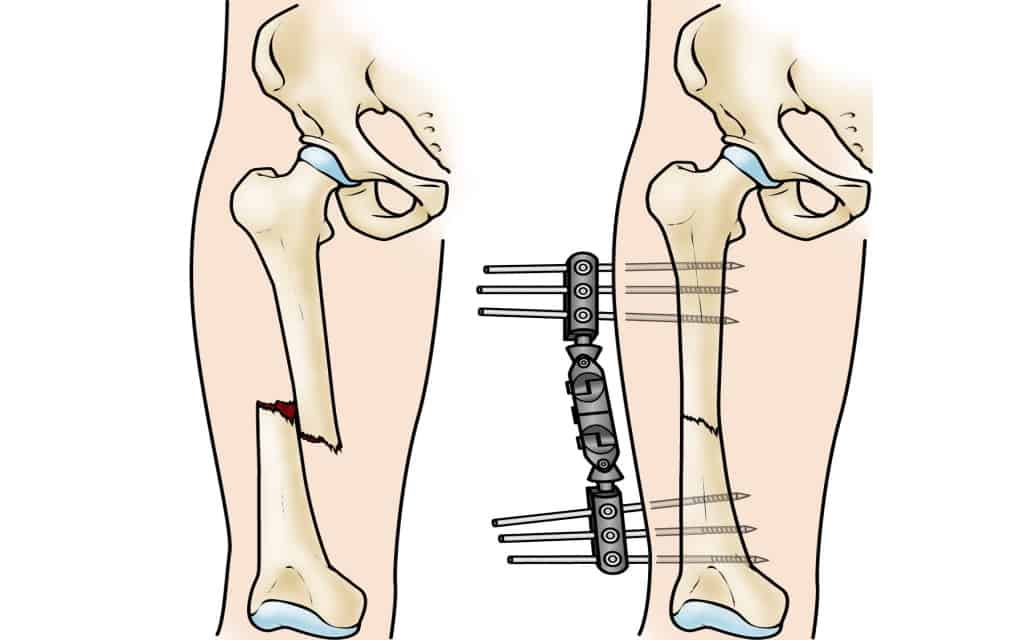The field of orthopedics has evolved a lot in recent years and this has helped a lot to both patients as well as orthopedic surgeons. The development of better and new technologies in the orthopedic sector has made it easier for specialists to manage even serious conditions with much more confidence. While on the other hand, for patients, the recovery rate has improved along with better results.
Fractures can occur anywhere in the body due to trauma and there are certain conditions where it is not feasible to provide internal fixation of the fractures. In such cases, external fixation is done and that requires the use of an External Fixator System. In this post, we are going to discuss what external fixators are and what is their importance.
What are External Fixators?
As the name suggests, external fixators are the orthopedic devices that are applied outside the fractured area unlike Bone Screws and Plates and other trauma implants that are fixed internally. External fixators create a rigid frame around the fractured site while holding fractured bone fragments in their correct anatomical position. To apply the External Fixator System, small incisions are required to be made into the skin to apply metal pins & screws into the bone.
This type of fixator is known to be most commonly used for correcting misalignment of the bone, limb lengthening surgery, and also in case of serious injury or burn to protect soft tissues.
The use of external fixators is also seen with the patients having low healing ability or other conditions like diabetes, osteomyelitis, or peripheral vascular disease.
Advantages of Using External Fixation System
It is seen that using external fixators reduces the chances of infection when compared to internal fixation of the fracture. Besides this, external fixation of fractures is known to ensure less damage to the blood supply to the fractured bone. Being a minimally invasive technique, external fixation also provides better control to the injured area for wound irrigation, cleaning, and management. In the case of external fixation of fractures, the device remains outside the skin, thus, it can easily be adjusted by the surgeon according to the need.
Besides advantages, there are certain drawbacks of using this system as well. Let us have a look at them as well.
Disadvantages of Using External Fixation System
It is noticed that the external fixator device is bulky & large plus, requires extra maintenance & care. Another drawback of using this system that must be considered is that there are chances of fracture at the hole sites after the removal of the rods. This is because holes are drilled at the areas where the bone is not damaged around the fracture site. Whereas, the risk of infection is less but it is there.
Contraindications of External Fixator System
The treatment of fractures with external fixation is avoided in certain cases including:
- When the patient has bone-related disorders or deterioration of bone is occurring. In such cases, stabilization of the External Fixator Device could get affected.
- People unable to give proper care to the pins and wire or are not willing to do so.
- External fixation is also not indicated in the case where the patient has a weak immune system. In such conditions, the patient has a higher chance of getting the infection.
To get ISO standard quality External Fixator System, contact Siora Surgicals Pvt. Ltd. The company is one of the trusted Orthopedic Instruments Manufacturers offering its high-quality products to many clients present in different countries of the globe.



